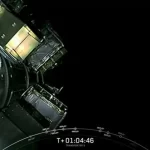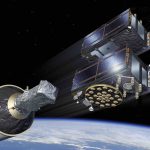As interest in low Earth orbit (LEO) satellites grows, so has the need for accurate modeling of the environment for precise, realistic GNSS/PNT testing. This, however, is a difficult task. LEO satellites are much closer to the Earth than MEO satellites, and that means they must endure different gravitational and atmospheric impacts that are difficult to replicate in a lab.
To fill this need, Spirent recently released its SimORBIT high-accuracy orbital modeling software for LEO satellite simulation—an industry first. The software, developed in partnership with SpacePNT, makes it possible for customers to test using simulations that more accurately represent a LEO satellite’s true operating environment, giving them the confidence the satellite will perform as it should once it’s launched into space.
Because LEO satellites are so close to Earth, their speed is very high, Product Manager Mia Swain said, as much as 7 km per second, which is challenging to replicate. Testing in the field is difficult and expensive, so lab-based simulations are the only way to test these expensive satellites prior to launch.
“It’s crucial for a LEO satellite to know where it’s located,” Swain said. “Consider, for example, a LEO satellite broadcasting for PNT purposes. It’s all about the psuedorange. If during simulation the orbit is inaccurate, the psuedorange will be wrong and the data which contains the broadcasting satellite will not be accurate. That’s why it’s crucial to have precise modeling and to have the capability to do so in the lab.”
The partnership
SpacePNT is a small startup company with expertise in space borne receivers, Swain said. Combining their capability with Spirent’s GNSS simulation capabilities was a “very good match” that allowed for the development of this advanced LEO test solution. The receiver SpacePNT developed was integrated into Spirent’s simulation system to create SimORBIT.
“As applications become more challenging, in order to provide the most realistic and highest performance test environment for our customers, we need to partner with experts in specific fields for specific applications,” Spirent Product Marketing Manager William Thornton said. “In the field of LEO, SpacePNT represents exactly that, so we sought to bring their expertise and knowledge into our class-leading simulation to help our customers build better constellations.”
The Flex feature
SimORBIT combines the simulation of precise LEO orbits and highly accurate GNSS signals, complementing the system’s ability to generate non-ICD signals with I/Q injection or the company’s “Flex” feature.
LEO satellites broadcast a different code and carrier frequency than what a receiver normally sees with GPS and Galileo constellations, Swain said. The Flex feature offers the flexibility to change the modulation and the parameters of the signals broadcasting their message. The Flex feature makes it possible to develop space based PNT signals in the lab.
“Users can create their own PNT signals,” Thornton said. “They can test them, they can modify them, they can assess the performance based on transmitting those signals to receivers and by different set ups. You could incorporate ground control elements into this, for example.”
What’s next
There are essentially two applications for this simulation model: PNT for LEO, which means modeling positioning and motion accuracy of LEO satellites to perform realistic testing of the onboard GNSS receiver, which most LEO satellites will have, and PNT from LEO, where new constellations are being created as alternative PNT signals that are higher frequency and higher power.
Using Spirent’s SimORBIT model, developers can now accurately replicate LEO orbits for the first time, enabling customers to test using simulations that more closely resemble the true operating environment of a LEO satellite. The company plans to eventually simulate the combination of GNSS and LEO PNT signals.
“Imagine that the LEO satellites are receiving GNSS signals from GPS while broadcasting their own PNT signal down to the ground,” Swain said. “This is our next step, to simulate the signal coming from the LEO satellite to the ground. The combination of that and GNSS will be the overall whole package for the advanced LEO PNT solution. So that’s phase two.”
There’s a very real difference between LEO and MEO—there’s 21,000 kilometers between a typical LEO satellite and a typical Galileo satellite, for example—making the ability to accurately simulate LEO’s characteristics and the environment critical, Thornton said.
“You can’t just send this highly expensive and not necessarily easy to launch equipment into space to see if it works,” Thornton said. “That can cause serious problems. The simulator gives people the opportunity to truly prove whether their constellations will perform, giving them a confident verification.”
Image courtesy of NASA.






